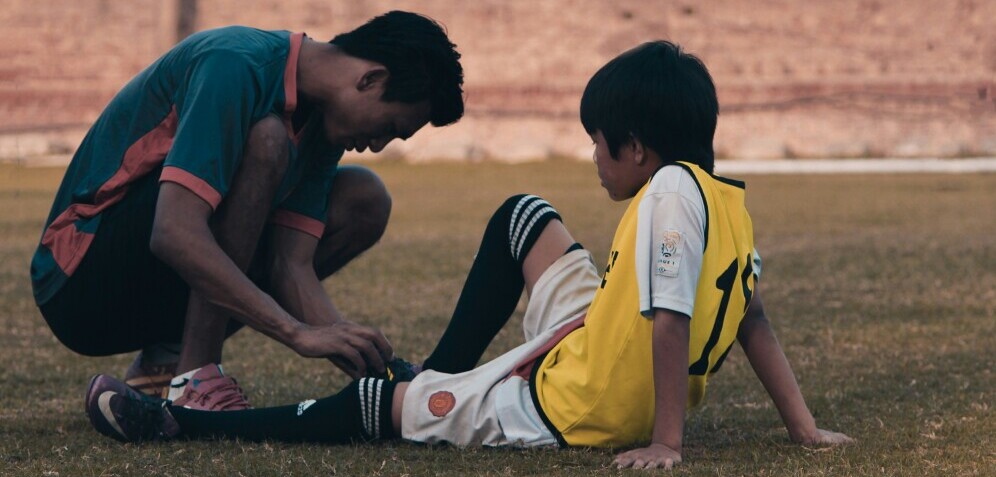see disclaimer on sidebar
The Rest and Protect Method is a strategy often used in the management and recovery of injuries, particularly those that involve musculoskeletal tissues like muscles, tendons, ligaments, and joints. It is a crucial part of the R.I.C.E. (Rest, Ice, Compression, Elevation) protocol that athletes and healthcare professionals use to manage acute injuries. The idea behind the Rest and Protect method is to prevent further harm to the injury site and to allow the body’s natural healing process to occur as efficiently as possible.

Key Elements of the Rest and Protect Method
Rest
Resting the affected area is one of the primary components of the method. It involves avoiding movements that would stress or aggravate the injury, giving the body time to heal. This doesn’t necessarily mean complete immobility, but it does involve reducing physical activity** that could put additional strain on the injured tissues.
Rest is essential in preventing further damage, allowing the body to focus on repairing the injured tissues without being stressed further. In many cases, rest is combined with activity modification, where the person engages in lower-impact activities that do not stress the injured area (e.g., swimming or cycling instead of running).
Protect
- Protection involves measures to prevent additional injury to the affected area. This can be achieved through various means, such as:
- Bracing or using supports (e.g., ankle braces, knee sleeves) to stabilize the injured area and avoid excessive movement.
- Taping the injured site to offer external support and protect the tissues from strain.
- Using crutches or other assistive devices to take weight off a strained joint or muscle.
- Protection is crucial in the initial phase of healing, as it prevents further mechanical stress that could delay healing or worsen the injury.
Why is it Important?
1. Prevents Further Injury: By resting and protecting the injured area, you reduce the risk of exacerbating the injury. This is especially important in acute injuries where the tissues are already vulnerable. Re-injury can lead to chronic conditions or a prolonged recovery period.
2. Optimizes Healing: Rest and protection create an environment where the body can begin the healing process without interference from activities that could place stress on the injury. Tissue repair requires time, and **overuse of the affected area can inhibit this process, potentially leading to scar tissue formation or muscle imbalances (McMahon et al., 2015).
3. Reduces Pain and Inflammation: Resting the area helps to reduce the pain and inflammation that naturally occur after injury. Overuse of the affected tissue leads to increased inflammation, which can delay recovery. The protective measures (like bracing) help to stabilize the injury and reduce discomfort, ensuring that you’re not re-injuring the site unintentionally.
4. Prevents Chronic Injury: If an injury isn’t allowed to rest and heal properly, it may not recover fully, which can lead to long-term issues. Chronic injuries are often the result of an initial injury that didn’t receive proper rest or protection. This can manifest as long-lasting pain or mobility restrictions that persist even after the acute phase has passed (Bianchi et al., 2014).
5. Improves Return to Activity: Proper rest and protection ensure that you can return to physical activity in a timely and safe manner. Starting activity too soon without proper recovery can lead to further damage and extended downtime. With the proper rest and protection, the injured tissue can regain its strength and functionality, reducing the chances of re-injury when resuming activity (Foster et al., 2016).

Practical Application
- Acute Injuries: The Rest and Protect method is most beneficial immediately after an injury occurs, particularly within the first 24-48 hours. For example, if someone twists their ankle, they should rest it by avoiding walking on it and protect it with a brace or by elevating it to prevent swelling.
- Chronic Injuries: If a person has a long-standing condition like tendonitis, applying the Rest and Protect method intermittently can help manage flare-ups by allowing the tissues to rest and recover before resuming full activity.
Additional Considerations
Gradual Return to Activity: After resting and protecting the injury for a sufficient period, the next step is typically gradual rehabilitation, where gentle movement, stretching, and strengthening exercises are incorporated to restore functionality.
Integrating Other Techniques: In some cases, combining the Rest and Protect method with other therapeutic measures like heat therapy, ice, anti-inflammatory medications, or even physical therapy can accelerate the healing process (McMahon et al., 2015).
References:
Bianchi, L., et al. (2014). Rest and recovery strategies for musculoskeletal injuries: An evidence-based approach. Journal of Pain Management.
Foster, N. E., et al. (2016). Recovery strategies for sports injuries. Sports Medicine.
McMahon, S. B., et al. (2015). Pain mechanisms and management in musculoskeletal disorders. The Lancet.
Summary
In summary, the Rest and Protect Method plays a vital role in ensuring that injuries are managed properly and heal effectively. By giving the body time to recover and protecting the injured area from further strain, the method supports quicker recovery, reduces the risk of complications, and prevents the injury from becoming a chronic issue.

No Responses